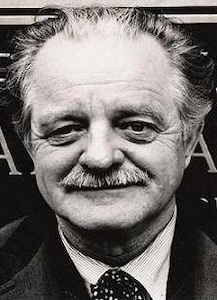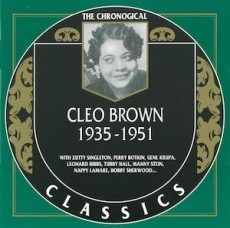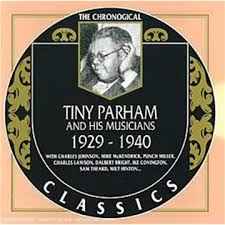
Jazz Poems
From WRITTEN TO MUSIC EIGHT FOR ORNETTE’S MUSIC If the pain is greater than the difference as the bird in the night or the perfumes in the moon oh witch of question oh lips of submission in the flesh of summer the silver slipper in the sleeping forest if hope surpasses the question by the mossy spring in the noon of harvest between the pillars of silk in the luminous difference oh tongue of music oh teacher of splendor if the meat of the heart if the fluid of the wing as love if birth or trust as love as love time turns the tables the indifferent and blissful Spring saves all souls and seeds and slaves asleep dark Spring in the dark whispering human will words spoken by two kissing tongues hissing union Eve’s snake stars come on two naked bodies tumble through bodiless Christmas trees blazing like bees and rosebuds fire turns to falling powder lips relax and smile and sleep fire sweeps the hearth of the blood on far off red double stars they probate their own tied wills KENNETH REXROTHfrom Jazz Poems ~ Selected and Edited by Kevin Young
More Posts: book,classic,collectible,history,jazz,library,poet

Daily Dose Of Jazz…
Cleopatra Brown was born on December 8, 1909 in De Kalb, Mississippi. She moved to Meridian, Mississippi when her father took a position as pastor and in his church she played piano as a child.
In 1919 her family moved to Chicago, Illinois and she began learning piano from her brother who worked with Pine Top Smith, playing boogie-woogie for dances. Around the time Cleo was 14 she worked in vaudeville, as well as taking gigs in clubs. In 1935, she replaced Fats Waller as pianist on New York radio station WABC.
From the 1930s to the 1950s she toured the United States regularly, recording for Decca Records among other labels along the way and recording many humorous, ironic titles such as Breakin’ in a New Pair of Shoes, Mama Don’t Want No Peas and Rice and Coconut Oil, When Hollywood Goes Black and Tan, and The Stuff Is Here and It’s Mellow.
Cleo’s stride piano playing was often compared to Fats Waller and she is credited as an influence on Dave Brubeck, who played during the intermissions of her shows, and on Marian McPartland. She played regularly at clubs in Chicago, toured widely, and recorded for both Decca and Capitol Records.
Brown began to shy away from singing bawdy blues songs because of her deepening religious beliefs. In 1953, she was baptized, retired from music, and became a nurse in 1959. Jazz biographies frequently listed her as deceased due to her absence from music. The song Sweet Cleo Brown was recorded by Brubeck in tribute.
From the mid-1970s until 1981, she performed under the name of C. Patra Brown on radio shows in Denver, Colorado. She replaced boogie-woogie music with slower, inspirational music. She returned to record again, and performed on National Public Radio.
Pianist and vocalist Cleo Brown, who was the first woman instrumentalist to receive the NEA Jazz Masters Fellowship, and also performed and recorded under the name of Cleo Patra Brown, died on April 15, 1995, in Denver, Colorado.
More Posts: bandleader,history,instrumental,jazz,music,piano,vocal

Daily Dose Of Jazz…
George James was born in Boggs, Oklahoma on December 7, 1906. His career didn’t begin until the late 1920s joining the bands of Charlie Creath and Johnny Neal. He moved to Chicago, Illinois in 1928, where he played with Jimmie Noone, Sammy Stewart, Ida Marples, Jabbo Smith, and Bert Hall.
In 1931 through the first quarter of 1932 he toured with Louis Armstrong, and at the end of the tour he remained in New York City. There he joined the Savoy Bearcats and later played with Charlie Turner’s Arcadians. By the middle of the decade Fats Waller assumed leadership of the Arcadians, and James played under him until 1937.
Finishing the decade playing in the Blackbirds Revue, early in the 1940s he worked with James P. Johnson, Benny Carter, Teddy Wilson, and Lucky Millinder, and led his own bandhttps://notoriousjazz.com/jazz-type/swing/daily-dose-of-jazz-3977↗ in 1943-44. Later in the decade James played with Claude Hopkins and Noble Sissle.
He was active both as a leader and a sideman into the 1970s, playing with Clyde Bernhardt and the Harlem Blues and Jazz Band in that decade. Saxophonist, clarinetist, and flautist George James died on January 30, 1995 in Columbus, Ohio.
More Posts: bandleader,clarinet,flute,history,instrumental,jazz,music,saxophone

Daily Dose Of Jazz…
Connee Boswell was born Constance Foore Boswell on December 3, 1907 in Kansas City, Missouri but raised in New Orleans, Louisiana. With sisters Martha and Helvetia “Vet”, she performed in the 1920s and 1930s as the trio The Boswell Sisters. They came to be well known locally while still in their early teens, making appearances in New Orleans theaters and on radio. The girls started their career as instrumentalists but became a highly influential singing group via their recordings and film and television appearances.
They made their first recordings for Victor Records in 1925, which featured Connee singing in the style of her early influence, Mamie Smith. The sisters became stage professionals that year when they were tapped to fill in for an act at New Orleans’ Orpheum Theatre. This led to a gig in Chicago, Illinois and then on to San Francisco, California. The desk clerk at the recommended hotel was Harry Leedy was part owner of Decca Records, became their manager on a handshake and later Connee’s husband.
The next stop was Los Angeles, California where they performed on local radio and “side-miked” for the soundies. National attention came with a move to New York City in 1930 and the making of national radio broadcasts. After a few recordings with Okeh Records, they recorded for Brunswick Records from 1931 to 1935.
Connee recorded as a solo artist and had several successful singles. In 1935, the sisters had a No. 1 hit with The Object of My Affection, and the group signed to Decca Records, but after just three releases two sisters called it quits in 1936. Connee, however, continued to have a successful solo career as a singer for Decca but also later recorded for the new Apollo label, RCA Victor, and Decca subsidiary, Design.
During the Forties she was a co-star on NBC Radio’s Kraft Music Hall, starred in her own radio show on the NBC Blue Network, The Connee Boswell Show, and featured on CBS Radio’s Tonight On Broadway, among numerous other radio appearances and films. She was a favorite duet partner of Bing Crosby, and they frequently sang together on radio, as well as recording several hit records as a duo in the 1930s and 1940s.
Vocalist Connee Boswell, who recorded ten albums as a leader and had fifteen hits reach the top 12 on the Billboard list, died on October 11, 1976 from stomach cancer at Mount Sinai Hospital in New York City at age 68.
More Posts: bandleader,history,instrumental,jazz,music,vocal

Daily Dose Of Jazz…
Guy Edgar Kelly was born in Scotlandville, Louisiana on November 22, 1906. In his early career he performed in Baton Rouge, Louisiana with a band led by Toots Johnson before going to New Orleans, Louisiana to play in Papa Celestin’s band in 1927-1928. While residing there he would regularly perform in trumpet duels with Red Allen.
In 1929 he went on tour as a member of Kid Howard’s band, and then joined Boyd Atkins’s band in the summer of 1930. By 1931 Kelly had moved to Chicago, Illinois where he was working with Cassino Simpson and Erskine Tate.
In the 1930s he worked with banjoist Ed Carry, pianists Dave Peyton, Tiny Parham, Albert Ammons, violinist Carroll Dickerson, and clarinetist Jimmie Noone,. Guy appears on the Noone classic composition The Blues Jumped A Rabbit, recorded Chicago on January 15, 1936.
Trumpeter and singer Guy Kelly died February 24, 1940.




